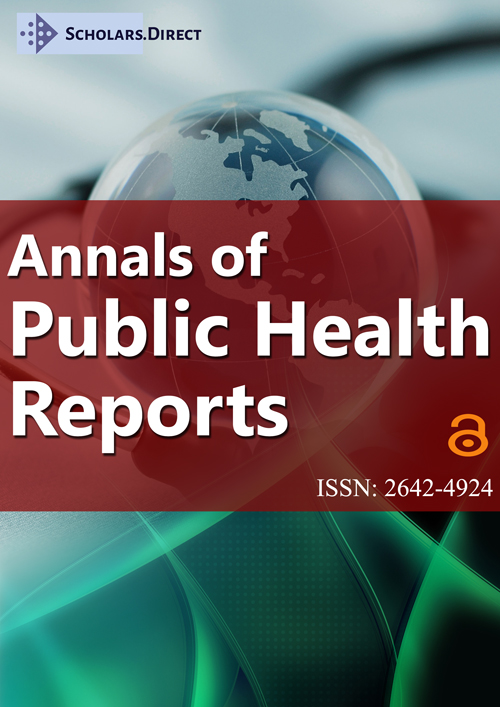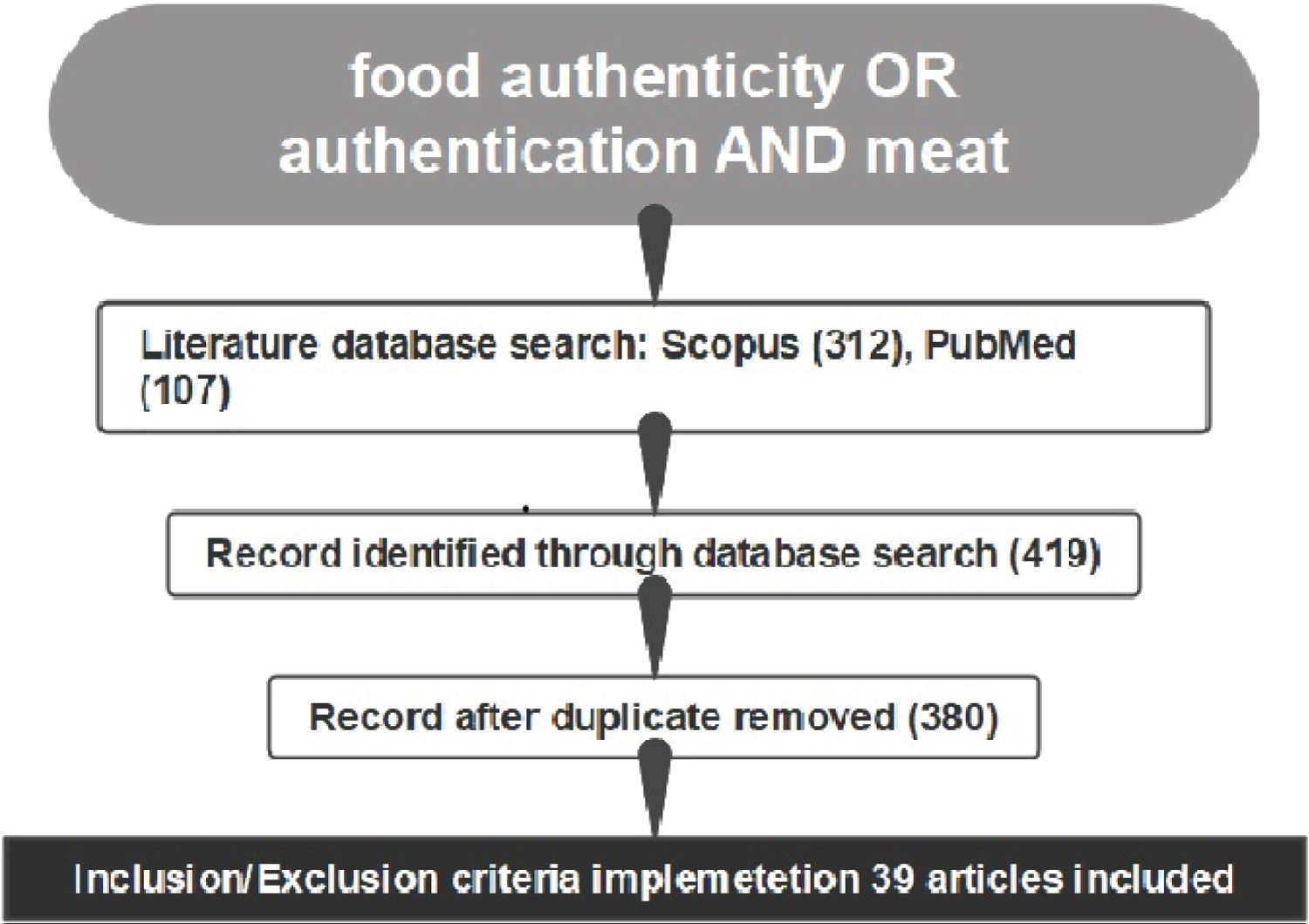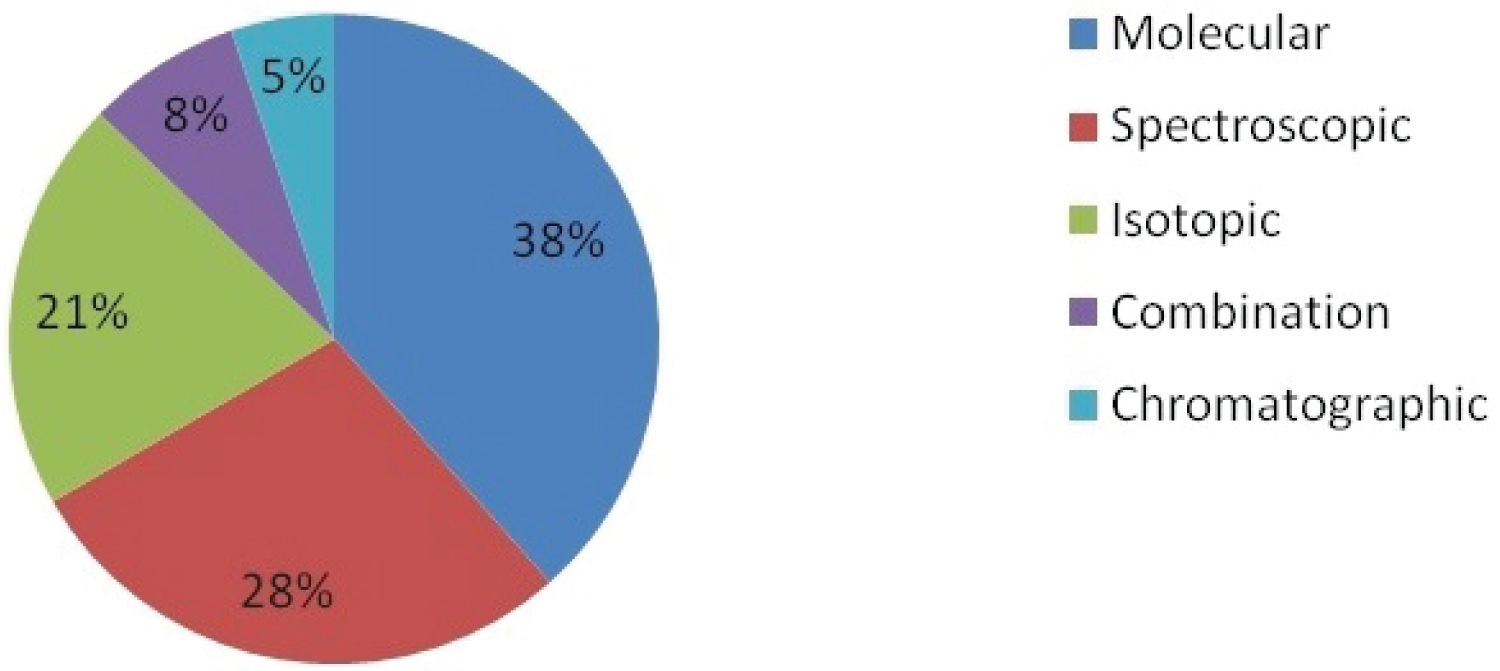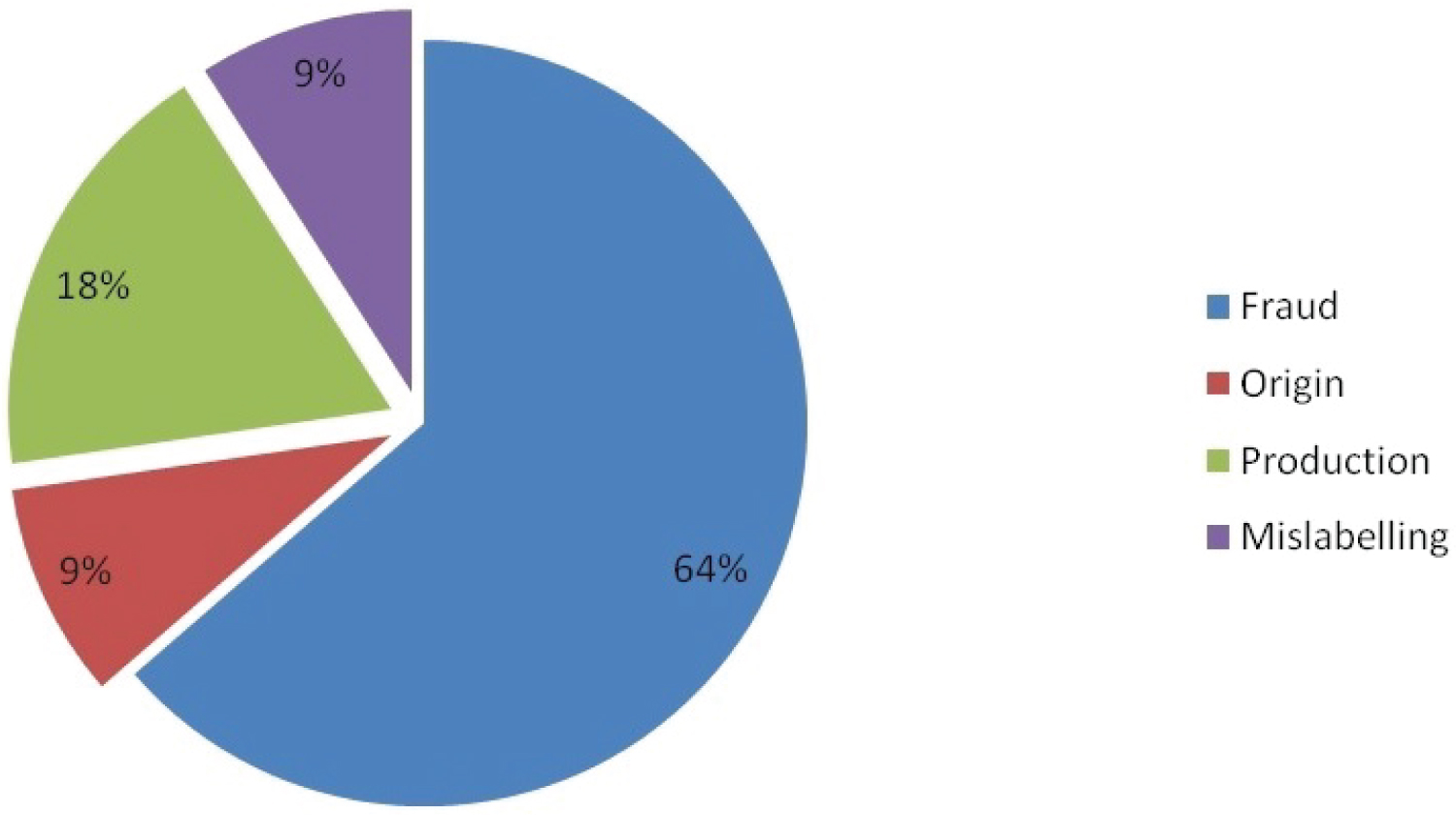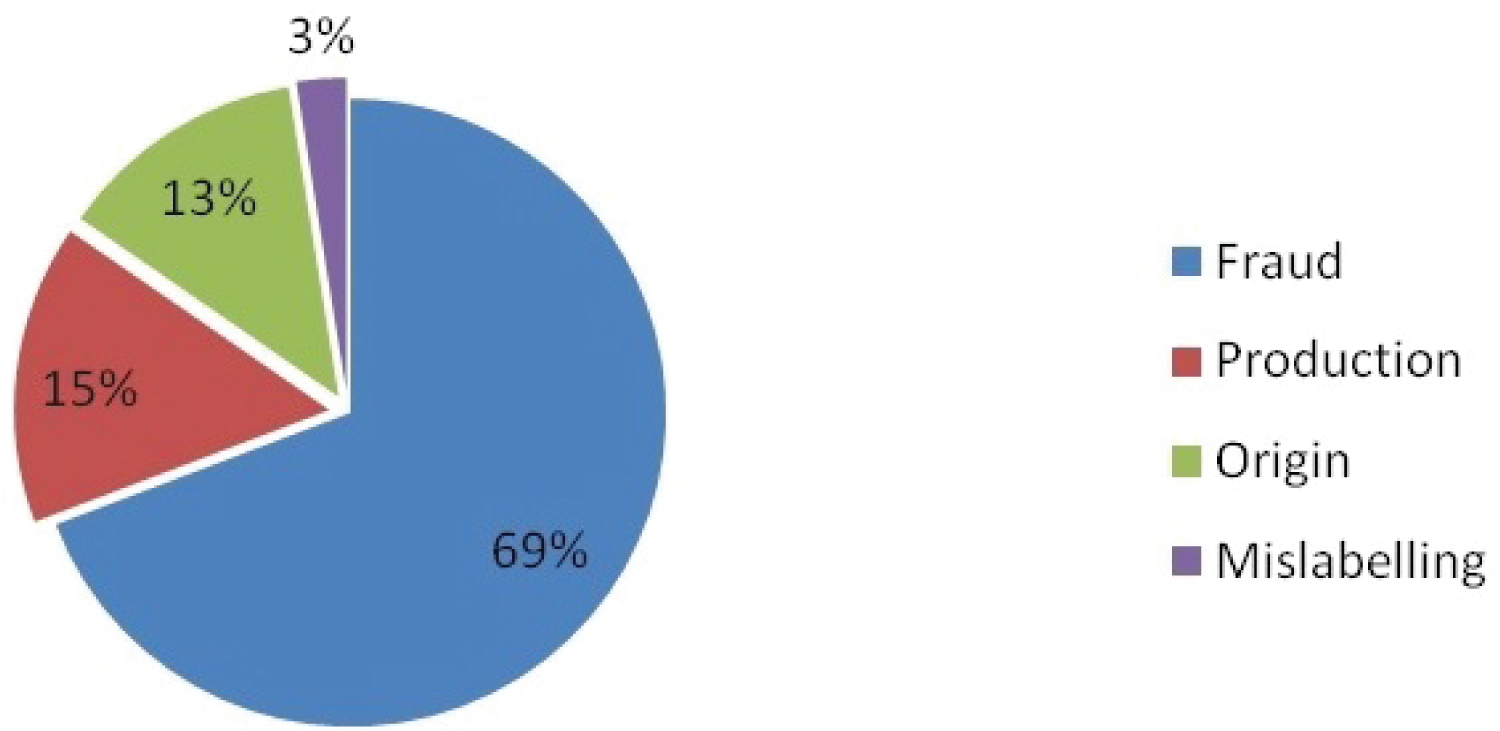A Systematic Review on the Authenticity Trends of Goat and Sheep Meat and Their Products: Implications for Public Health
Abstract
There is increasing interest among researchers and consumers in the issue of food authenticity, as it directly related to public health issues and consumers protection principle. The term authenticity is multidimensional and includes many concepts such as fraud, origin, production process etc. The most common target of adulteration is meat, mainly due to financial reasons; goat and sheep meat are often adulterated. The aim of this systematic review is to assess the literature of the last 20 years on the topic of sheep and goat meat authenticity and to highlight the implications for public health and consumer protection. A total of 419 articles were retrieved from two databases (Pub Med and Scopus) using specific keywords and inclusion/exclusion criteria. Only 39 articles were related to sheep and goat meat and its products. A main conclusion of this study was that there is limited research on sheep and goat meat compared to the other types of meat and that the most common authenticity methods used are molecular techniques related to fraud detection. The main authenticity issue investigated was the substitution of sheep and goat meat with another type of meat that is cheaper. There is extremely minimal data available in relation to origin and production process of sheep and goat meat, that both could add value to the end products and empower the specific agricultural sector, but also assure consumers of these products special quality attributes.
Keywords
Goat, Sheep, Authentication, Fraud, Meat, Public health
Introduction
Traditionally, meat and meat products are some of the most basic parts of the human diet, providing nutrients of important nutritional value, such as proteins and vitamins [1] and alongside they are highly palatable. Sheep and goat meat more specifically, are main part of people's diet in several parts of the world, such as the Mediterranean and the Middle East, due to cultural, religious, social, and geographical reasons [2]. As meat and especially sheep and goat meat are considered expensive foods, their niche market is often adulterated, something that has implications, either severe or minor, to consumers, thus challenging public health. In that sense, sheep and goat meat and meat products authenticity is related to public health issues, as one of the main public health concerns includes access to essential, nutritional, and safe food for everyone [3].
Food authenticity is defined by Food and Agriculture Organization (FAO) as: "The quality of a food to be genuine and undisputed in its nature, origin, identity, and claims and to meet expected properties" (CX/FICS 18/24/7). Indicatively, the term authenticity includes the concepts of fraud, origin, safety and mislabeling, that are aspects that can influence consumers health and protection [4]. Food authenticity can be assessed by several different analytical techniques such as molecular, isotopic, chromatographic, spectroscopic or their combination [5], thus relating to a special authenticity parameter (fraud, origin, production etc).
More specifically, food fraud is considered "any suspected intentional action by businesses or individuals for the purpose of deceiving purchasers and gaining undue advantage there from" (EC Reg 2017/625). This could be achieved by adulterating the meat with other breeds or other species or by adding/removing one ingredient. Recent meat scandals such as the dioxin in poultry in Belgium (1999), the horse meat in beef products (2013), and the" mad cow" disease (2000) have drawn worldwide attention in terms of public health but in parallel lead to severe economic losses [6].
Another pillar of authenticity is related to the origin of meat or meat products relating to the geographical origin, for example the indication of the country of origin or place of origin of the primary ingredient of food as defined by legislation (EU) 2018/775. In that sense, EU has introduced systems relating, for example, to protected designation of origin (PDO), protected geographical indication (PGI), traditional specialties guaranteed (TSG) (EC 1151/2012), mountain product (EC 665/2014), organic product (EC 848/2018), to safeguard consumers from misleading.
The authenticity type related to the production process of a food, in our case meat and meat products, refers to the way of farming, e.g., organic, or conventional, grass-fed livestock and other nutritional interventions in animal farming, but also to the actual production steps that may introduce hazards to human health. In this case the certification of primary production and the process of meat and meat products through accredited schemes related to safety and/or quality can assist safeguarding authenticity of the product [7].
Another aspect of meat and meat products authenticity is the misleading labeling according to Regulation (EU) No 1169/2011. Indicatively, food labeling should include all necessary nutritional and health claims. False information on the label will mislead consumer choices, possibly resulting in serious social, religious and health issues [8].
Based on the above mentioned data, it is extremely valuable to assess the current situation of a rather neglected type of meat, that of sheep and goat, in order to highlight the importance of maintaining their authenticity, as this is a common need of producers, academia and consumers [9].
The aim of this study is to systematically review the current literature in relation to sheep and goat meat authenticity, over the last 20 years and identify how these possibly may affect public health.
Methodology
Search strategy and data sources
Two reviewers (LD and EM) searched the scientific electronic databases (SCOPUS and PUBMED) for peer-reviewed articles between 2000 and 2021, using the following keywords: food authenticity OR authentication AND meat. Studies identified from searching electronic databases were combined, duplicates removed, and papers were screened for relevance to the review based on the title and abstract. Another reviewer (AM) screened abstracts, and potentially eligible papers were identified.
Inclusion/Exclusion criteria
Studies were included if they were (A) research articles, (B) published in English, (C) related to sheep and goat meat, and meat products authenticity and (D) published between 2000 to 2021. Studies were excluded if they were (A) review articles and (B) related to other meat producing species.
Study selection and data extraction
The papers retrieved, excluding duplicates, were 419. Of those, 380 papers were excluded based on the inclusion/exclusion criteria used. The studies finally included in this review were 39 (Figure 1) and the full text of references identified as potentially relevant was obtained and analyzed further.
These articles were then categorized into two main categories. The first concerns the methods of analysis (Molecular, Isotopic, Chromatographic, Spectroscopic, Combination) and the second the type of authenticity identified (fraud, origin, production, mislabeling). The second category (type) was then further categorized in terms of type of fraud (species, breeds, ingredient added or replaced) and type of food (carcase, meat products, wild animals).
Results and Discussion
As the literature is ambiguous as to what constitutes authenticity, many view fraud solely as a violation of authenticity. This study approaches the term "authenticity" holistically according to the official definitions. Initially, the research focused on the analytical tools used in sheep and goat meat authenticity, namely, molecular, isotopic, chromatographic, spectroscopic, and combination of methods. The second pillar of our research focused on the kind of authenticity that research dealt with. It was analyzed in four subcategories. The first was the type of fraud, which involved the adulteration of meat with other breeds or species and the replacement of an ingredient. The second was the geographical origin of meat or meat products, for example the indication of the country of origin or place of origin of the primary ingredient of food as defined by legislation (EU) 2018/775. The third concerned the method of production, for example organic/conventional, grass fed etc. Finally, the fourth subcategory was misleading labeling according to Regulation (EU) No 1169/2011.
Initially, it is important to emphasize that out of a total of 419 articles identified by the research done, only 39 were about sheep and goat meat in relation to other types of meat, such as beef and pork which were most of them. These two types of meat are very nutritious and often subject to adulteration usually due to their high price as Jiang, et al. 2022 mentions about mutton kebab compared to other types and it would have been expected to receive more interest by the academic and research community.
Analytical tools used for sheep and goat meat and products authenticity
With regards to the analytical approaches on goat and sheep meat and meat products authenticity, the data retrieved showed that the primary tools (38%) used are molecular techniques, followed by spectroscopic methods (28%) and other methods as presented in detail in Figure 2.
In relation to the primary group of methods used, the molecular, the most common analytical approach relates to Polymerase Chain Reaction (PCR), multiplex PCR and electrophoresis. Mounika, et al., [10] reports that molecular methods are the flagship of food authenticity generally, and more specifically for meat and meat products as they focus on detecting and quantifying species adulteration.
Investigating the type of authenticity assessed by molecular methods (15 articles), it was found that the main issue was food fraud (100%) and specifically the adulteration with meat from other species (100%). The most frequent fraud with other species was related to pork and beef, most likely related to economic as well as religious issues, as reported by Liu, et al. [11] and Hu, et al. [12]. Meat adulteration has been of great interest since the horsemeat scandal of 2013 which led the research community to intensify the accuracy and suitability of the analytical tools used to provide immediate and high-proximity results, with focus on beef meat, whether sheep and goat seems to be rather neglected. It should be noted that out of a total of 39 articles, 25 were published between 2013-2021 and of these 17 investigated the adulteration of goat and sheep meat and 88% the adulteration of other types of meat. Interestingly, in 65% of these articles, the main products studied are carcasses and raw meat while ready-to-eat products have not been studied as much. As reported by Agnoli, et al. [13] considering the opinion of European consumers, 57% of the average of all countries surveyed voted that the importance of correct labeling of food ingredients is "very important". They also state that DNA-based assays are the most widely used to detect authenticity, which is also reflected in our results.
As presented in Figure 2, other than molecular techniques that are used for sheep and goat meat and meat products authentication, based on the frequency identified, are: spectroscopic > isotopic > chromatographic and then there is an interesting amount of work done using a combination of analytical tools (8%), that is believed to be a thorough approach in authentication that is not focusing solely in one parameter, as reported by Wang, et al. [14] and Sivadier, et al. [15].
The second most common method used is spectroscopic at 28% (Figure 2). It is the first method where all four types of authenticity have been investigated (fraud, origin, production, labeling). However, the largest percentage of the analysis with 64% was that of adulteration with other types of meat, followed by the production process with 18% and 9% for the geographical origin and 9% for mislabeling (Figure 3). The fact that with the spectroscopic method there are data for all types of authenticity proves the potential of this methods for the whole range of risks related to authenticity. As reported by Crouzet C, et al. spectroscopic methods are mainly used to assess meat adulteration and there is a future trend for their use in multi-component detection as they are fast, reliable, and usually non-destructive as the FT-IR (Fourier-transform infrared spectroscopy) technique.
The next in ranking methods, are isotopic with 21% (Figure 2). A total of 50% of the research with isotopic was used for determining sheep and goat meat origin, 25% were focused on production and 25% were focused on fraud. The isotopic methods used mainly refer to nitrogen, carbon, sulfur, oxygen, and trace elements detection. Qi J, et al. states that isotopic methods in food analysis and more specifically in meat authentication are used for determining the origin of the product, while there are some reports that use these methods for discriminating the production system as well [16].
Finally, with regards to the methodologies with smaller percentages, there are chromatographic techniques with 8% and the combination of this with spectroscopic techniques (5%). Chromatography mainly dealt with adulteration with other animal species and with the production process, and similarly the combination of methods studies was used for the same purpose (Table 1).
In conclusion, sheep, and goat meat authenticity so far, is focused on sole parameters, such as fraud and more specifically on adulteration with other species while there is no data on other types of fraud such as substances supplementation. There is also very limited data regarding sheep and goat meat products authenticity, as emphasis is currently given on raw meat. Overall, it is observed that there is no direct relation in current literature among sheep and goat meat authenticity with public health issues, that should be addressed efficiently in the future. Finally, it was observed that there is no data related to sheep and goat meat authenticity using other methodologies such as e-nose, immunoenzymatically, signal processing and chemometrics that are frequently used in other types of meat authenticity assessment, that reflects the need to create specific tools for special authenticity parameters such as targeted chemical or volatile compounds, as also stated by others [5].
Types of goat & sheep meat and meat products authenticity
The second pillar of this review focused on the type of authenticity examined by researchers so far. Authentication problems for sheep and goat meat and meat products fall into four broad subcategories: Fraud (other species, other breed), geographical origin, production (organic/conventional etc) and incorrect labeling. Overall, investigating the type of authenticity with regards to goat and sheep meat and meat products that researchers have focused the last two decades, the main interest is on fraud (69%), followed by production (15%), geographical origin (13%) and mislabeling (3%) (Figure 4). The most common type of authentication detection is fraud by either different species or breeds or by the addition or replacement of a component, as previously discussed. In relation to the type of authenticity "Origin", there are few studies on the control of geographical origin (5 articles) representing 12% from the total of articles screened, although special attention is drawn by EU regulations. Even though there is a regulatory framework related to the origin authenticity, the literature presents limited data on this type of authenticity, as reported by [5] as well. The content of trace elements and isotopes in meat depends on various factors such as food intake, drinking water, pollution, and soil composition, which is related to the geographical origin. In future research, basic knowledge about stable isotope fractionation results in nature could be generated to design databases for certified authentic products. Fixed isotope procedures will not replace conventional analytical methodologies but will serve as additional necessary tools in food analysis. Meat products, especially Protected Geographical Indication (PGI) products of selected varieties produced in specific regions, have a higher value in the market. The determination of geographic origin has been achieved with varying degrees of success, and the accuracy can be improved by combining different methods [21]. However, when the PDO and PGI statements are to be verified, it is applied with a combination of parametric and multivariate statistics, and it is possible to accurately match a specific source. The methods used include nuclear magnetic resonance and pattern recognition techniques that have been used to study the geographical origin of meat.
A total of six articles dealt with "production authenticity", solely related to the primary production conditions, in terms of the applied feeding system. e.g., organic/conventional, whether no articles were found to be related to the actual production process from a technology/processing point of view. In any case, the available data is extremely limited, although this type of authenticity could have been strengthened more, as feeding regimes for example, could positively affect the quality and environmental profile of the final product, aspects that modern consumers are extremely aware, as mentioned by Gomez-Cortes P, et al. [17]. In relation to the absence of data related to the actual production process by technology/processing, there could be a possibility for further research, as mentioned by Tejerina [22], by applying spectroscopic methods to classify and detect the purity and the storage time of other types of meat.
In the type of authenticity related to mislabeling, only one article was retrieved, which reports a spectroscopic method for determining the authenticity of an enriched goat meat. As proper labeling of meat products is important to ensure fair trade and enable consumers to make informed choices, it was expected to find more relevant research [23].
Conclusion
This study presents that there is limited research on sheep and goat meat authenticity, even though it is considered as highly nutritious food and consumed widely, mainly in Middle East and Mediterranean countries. Generally, most of the research on meat authenticity was done after 2013 following the horsemeat scandal. Most authenticity research is conducted with molecular techniques, detecting the adulteration of sheep and goat meat with other animal species. In general, it is observed that the largest percentage of studies focused on fraud, something that proves the possible confusion in the term of authenticity, that should refer to other aspects as well, such as origin, way of production etc. The available evidence on sheep and goat origin and/or way of production is extremely minimal, even though it is equally important to safeguard consumers and empower the primary production sector. Furthermore, authenticity testing is mainly performed in raw meat, creating a gap in relation to meat products authenticity.
References
- Pereira CC, Vicente AF (2013) Meat nutritional composition and nutritive role in the human diet. Meat Science 93: 586-592.
- Teixeira A, Silva S, Rodrigues S (2019) Chapter Six - Advances in Sheep and Goat Meat Products Research. In: Toldrá F, Advances in Food and Nutrition Research. Academic Press, 305-370.
- Coniglio MA (2016) Food and Nutrition: Matters of Public Health. J Food Nutr Popul Health.
- Anowai E, Chukwujekwu S (2019) The concept of authentic and inauthentic existence in the philosophy of Martin Heidegger: The ‘Quarrel’ of Communitarians and Libertarians. Review of European Studies.
- Danezis GP, Tsagkaris AS, Camin F, et al. (2016) Food authentication: Techniques, trends & emerging approaches. TrAC Trends in Analytical Chemistry, On-site and In-vivo Instrumentation and Applications 85: 123-132.
- Smith R, Manning L, McElwee G (2022) The anatomy of ‘So-called Food-Fraud Scandals’ in the UK 1970-2018: Developing a contextualised understanding. Crime Law Soc Change 78: 535-558.
- Meeker DL (2009) North American Rendering: Processing high quality protein and fats for feed. R Bras Zootec 38: 432-440.
- Li T, Wang J, Qiao L, et al. (2021) Quantitative determination of mutton adulteration with single-copy nuclear genes by real-time PCR, Food Chem 344: 128622.
- Truninger M, Sobral JM (2011) Contested food authenticities: A review of consumers’ perspectives.
- Mounika T, Girish PS, Shashi Kumar M, et al. (2021) Identification of sheep (Ovis aries) meat by alkaline lysis-loop mediated isothermal amplification technique targeting mitochondrial D-loop region. J Food Sci Technol 58: 3825-3834.
- Liu R, Wang X, Shi Y, et al. (2019) A simple isothermal nucleic acid amplification method for the effective on-site identification for adulteration of pork source in mutton. Food Control 98: 297-302.
- Hu H, Chunyang W, Shanshan L, et al. (2021) Pre-Degassed microfluidic chamber-based digital PCR device for meat authentication applications. Micromachines 12: 694.
- Agnoli L, Roberta C, Maria De Salvo, et al. (2016) Food fraud and consumers’ choices in the wake of the horsemeat scandal. British Food Journal 118: 1898-1913.
- Wang J, Lei X, Zhenzhen X, et al. (2020) Liquid Chromatography quadrupole time-of-flight mass spectrometry and rapid evaporative ionization mass spectrometry were used to develop a lamb authentication method: A preliminary study. Foods 9: E1723.
- Sivadier G, Jérémy R, Frédéric B, et al. (2008) Authentication of meat products: Determination of animal feeding by parallel GC-MS analysis of three adipose tissues. J Agric Food Chem 56: 9803-9812.
- Erasmus SW, Magdalena M, Marieta R, et al. (2016) Stable isotope ratio analysis: A potential analytical tool for the authentication of South African lamb meat. Food Chem 192: 997-1005.
- Gómez-Cortés P, Francisco RD, Marta CR, et al. (2021) Odd-and branched-chain fatty acids in lamb meat as potential indicators of fattening diet characteristics. Foods 10: 77.
- Huang Y, Andueza D, de Oliveira L, et al. (2015) Visible spectroscopy on carcass fat combined with chemometrics to distinguish pasture-fed, concentrate-fed and concentrate-finished pasture-fed lambs. Meat Sci 101: 5-12.
- Sivadier G, Ratel J, Engel E (2009) Latency and persistence of diet volatile biomarkers in lamb fats. J Agric Food Chem 57: 645-652.
- Sivadier G, Ratel J, Engel E (2010) Persistence of pasture feeding volatile biomarkers in lamb fats. Food Chem 118: 418-425.
- Franke BM, Haldimann M, Gremaud G, et al. (2008) Element signature analysis: Its validation as a tool for geographic authentication of the origin of dried beef and poultry meat. Eur Food Res Technol 227: 701-708.
- Tejerina D, Contador R, Ortiz A (2021) Near infrared spectroscopy (NIRS) as tool for classification into official commercial categories and shelf-life storage times of pre-sliced modified atmosphere packaged Iberian dry-cured loin. Food Chem 356: 129733.
- Bandoniene D, Walkner C, Ringdorfer F, et al. (2020) Authentication of meat and dairy products using rare earth element labeling and detection by solution based and laser ablation ICP-MS. Food Research International 132.
Corresponding Author
Eleni Malissiova, Food of Animal Origin Laboratory, Animal Science Department, University of Thessaly, Gaiopolis Campus, Larisa, 41500, Greece
Copyright
© 2022 Dimitriou L, et al. This is an open-access article distributed under the terms of the Creative Commons Attribution License, which permits unrestricted use, distribution, and reproduction in any medium, provided the original author and source are credited.

